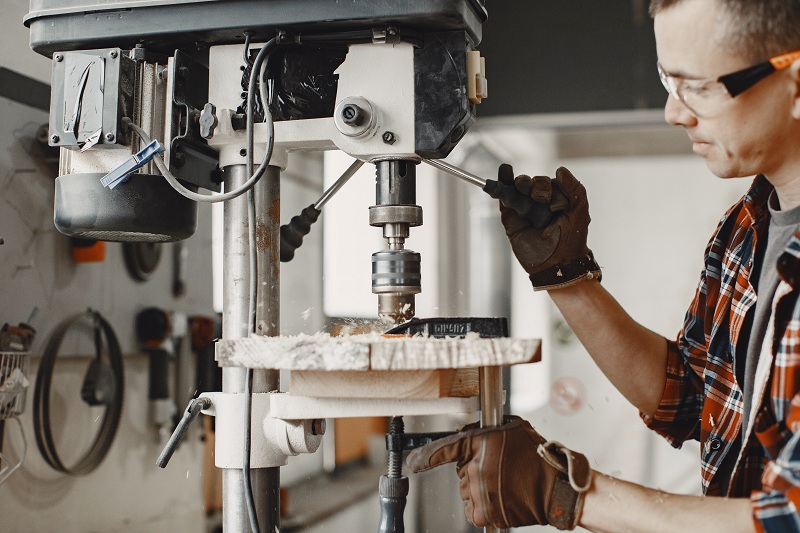
What is a Vertical Turning Lathe? Beginner’s Guide to VTL Machines
If you've ever walked through a heavy manufacturing unit or explored the world of CNC machines, you might have come across a Vertical Turning Lathe (VTL). These powerful machines are essential in precision machining, especially when dealing with large, heavy, and awkwardly shaped components. But what exactly is a vertical turning lathe, and why is it preferred in certain industries?
In this article, we’ll break down everything you need to know about VTL machines in a beginner-friendly way. From how they work, their advantages, to where they're used—let’s dive in.
What is a Vertical Turning Lathe?
A Vertical Turning Lathe Machines, often abbreviated as VTL, is a type of lathe machine where the spindle is vertically oriented. Unlike horizontal lathes, where the workpiece spins horizontally, in a VTL, the workpiece is mounted on a horizontal rotating table while the cutting tool moves vertically.
This setup makes VTLs ideal for machining large, heavy, and cylindrical parts, such as flywheels, gear blanks, brake drums, and industrial valves.
How Does a Vertical Turning Lathe Work?
The basic working principle of a vertical turning lathe is similar to other lathes—remove material from a rotating workpiece using a cutting tool. The difference lies in the orientation.
-
Workpiece Orientation: In VTLs, gravity helps hold the part securely.
-
Tool Movement: The cutting tool moves up/down and in/out to shape the material.
-
Machine Layout: Usually more compact vertically, saving floor space.
Key Components Include:
-
Rotary Table (chuck): Holds and spins the workpiece.
-
Tool Post: Houses and moves the cutting tool.
-
Cross Rail: Supports vertical movement of the tool.
-
Column/Base: Provides structural support.
Comparison: Vertical vs. Horizontal Lathe
| Feature | Vertical Turning Lathe (VTL) | Horizontal Lathe |
|---|---|---|
| Workpiece Position | Vertical | Horizontal |
| Best For | Large, heavy parts | Long, slim parts |
| Space | Occupies less floor space | Requires longer layout |
| Gravity Assist | Yes (better part stability) | No |
| Chip Removal | Falls naturally | May accumulate |
Where Are VTL Machines Used?
Vertical turning lathes are used across industries where large-diameter components need high precision. Common sectors include:
-
Automotive – Brake drums, hubs
-
Aerospace – Engine casings, turbine rings
-
Oil & Gas – Valves, pump housings
-
Heavy Equipment – Gears, flywheels
Their ability to hold weighty parts with stability makes them an irreplaceable asset in many high-precision manufacturing setups.
Advantages of Using Vertical Turning Lathes
Still wondering why companies choose VTLs over standard lathes? Here are some big advantages:
Stability & Gravity Assistance
The vertical design helps with secure part placement without additional clamps.
Space Saving
A vertical layout often takes up less room than horizontal counterparts.
Improved Chip Removal
Chips naturally fall away from the cutting area, reducing tool wear.
Ideal for CNC Automation
VTLs pair well with CNC controls, offering increased precision and consistency.
Types of Vertical Turning Lathes
There are different kinds of VTL machines available based on automation and design:
-
Manual VTLs – Operated by hand, ideal for small shops or custom work.
-
CNC VTLs – Computer-controlled for high accuracy and repeatability.
-
Single-Column VTLs – Best for medium-sized components.
-
Double-Column VTLs – Designed for very large, heavy-duty parts.
FAQs About Vertical Turning Lathes
Q1: What is the difference between a VTL and a CNC lathe?
A: A VTL refers to the orientation of the machine (vertical), while CNC refers to the control system. You can have a CNC VTL—a combination of both.
Q2: Are VTL machines suitable for small parts?
A: They’re mainly designed for large components. For small parts, a horizontal lathe or a milling machine may be more efficient.
Q3: How much does a vertical turning lathe cost?
A: Prices vary widely depending on size, automation level, and brand—from ₹10 lakhs for basic models to ₹1 crore+ for high-end CNC VTLs.
Q4: Can VTLs perform multiple machining operations?
A: Yes! Many modern VTLs can turn, bore, groove, and even perform milling or drilling.
Should You Invest in a VTL Machine?
If your work involves heavy, cylindrical components and you’re looking for high accuracy with minimal floor space, then a vertical turning lathe is likely the right machine for your workshop.
They’re not just efficient—they’re designed to reduce human error, improve production speed, and boost machining quality. Whether you're in the automotive or energy sector, understanding the power of a VTL could reshape your operations.
